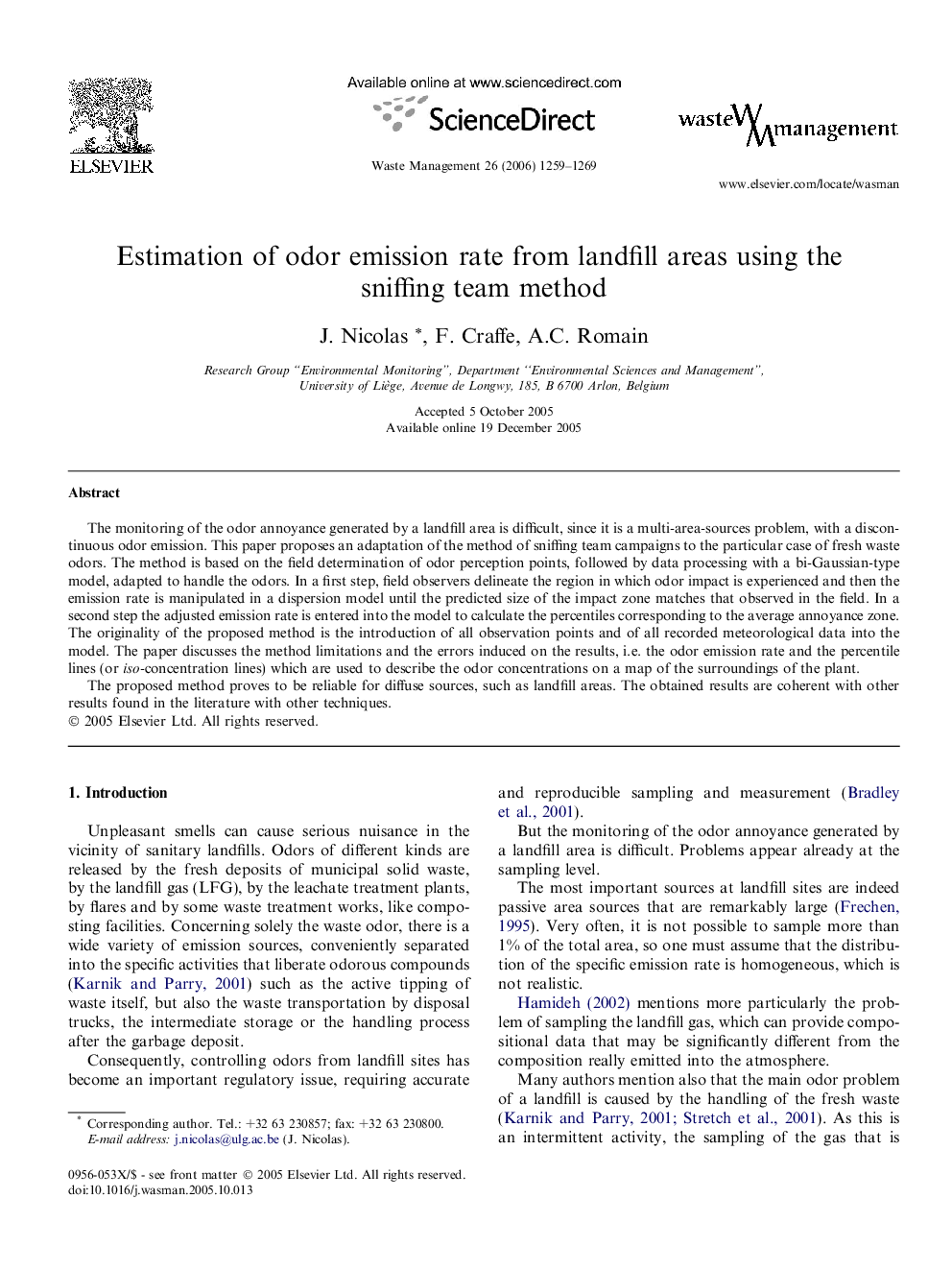| Article ID | Journal | Published Year | Pages | File Type |
|---|---|---|---|---|
| 4474210 | Waste Management | 2006 | 11 Pages |
The monitoring of the odor annoyance generated by a landfill area is difficult, since it is a multi-area-sources problem, with a discontinuous odor emission. This paper proposes an adaptation of the method of sniffing team campaigns to the particular case of fresh waste odors. The method is based on the field determination of odor perception points, followed by data processing with a bi-Gaussian-type model, adapted to handle the odors. In a first step, field observers delineate the region in which odor impact is experienced and then the emission rate is manipulated in a dispersion model until the predicted size of the impact zone matches that observed in the field. In a second step the adjusted emission rate is entered into the model to calculate the percentiles corresponding to the average annoyance zone. The originality of the proposed method is the introduction of all observation points and of all recorded meteorological data into the model. The paper discusses the method limitations and the errors induced on the results, i.e. the odor emission rate and the percentile lines (or iso-concentration lines) which are used to describe the odor concentrations on a map of the surroundings of the plant.The proposed method proves to be reliable for diffuse sources, such as landfill areas. The obtained results are coherent with other results found in the literature with other techniques.
